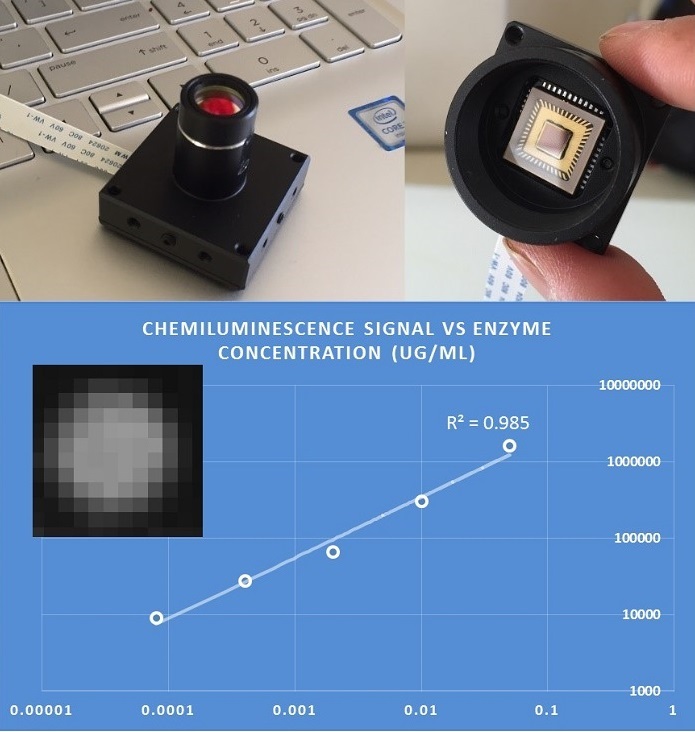MENLO PARK, Calif., May 17, 2016 /PRNewswire-iReach/ -- Anitoa Systems, ("Anitoa"), a Menlo Park, California startup, has demonstrated a low cost and portable CMOS-based chemiluminescence reader and applied it successfully with chemiluminescence immunoassay (CLIA). This CMOS-based solution is capable of detecting as low as a few ng/ML of analyte, such as protein macromolecules, in a sample. Applications of this technology ranges from clinical diagnostics to food safety and environmental monitoring.
A key component of Anitoa's portable chemiluminescence reader is its proprietary ULS24 CMOS bio-optical sensor chip. Endowed with extreme low-light sensitivity, it formed a single-chip chemiluminescence imaging device. The ULS24 CMOS-based imaging device also eliminates the need for a multi-sites scanning mechanism commonly used by most chemiluminescence readers when performing real time imaging of multiple immunoassay reaction sites. At a 5mmX5mm footprint and consumes only 30mW of power, Anitoa's ULS24 is especially well suited for point-of-care diagnostics applications.
Released in September 2014, Anitoa's ULS24 ultra-low light CMOS bio-optical sensor is the first and only commercially available CMOS image sensor that has the needed sensitivity to substitute the bulky and expensive photon multiplier tubes (PMT) and cooled-CCDs in a wide range of medical and scientific instruments. The ultra-low light sensitivity (3e-6 lux) of Anitoa's CMOS sensor is crucial for achieving good signal-to-noise ratio (SNR) in imaging molecular interactions based on fluorescent or chemiluminescence signaling principles.
Immunoassays is an important technique in detecting macromolecules in a sample (e.g. blood) using antibody as probes. It has been used widely in diagnostics (infectious diseases, heart diseases), food safety, pharmaceutical analysis and environmental monitoring. Based on chemiluminescence signaling principle, chemiluminescence-based immunoassay is emerging as the new immunoassay technique that provides orders of magnitude higher sensitivity and dynamic range than the traditional color absorbance-based immunoassays (e.g. ELISA).
"We are very pleased to see the test results coming back from our lab and our partners' labs showing the effectiveness of CMOS bio-optical sensors in chemiluminescence imaging. This not only validates the CMOS bio-optical sensor's ultra-low-light sensitivity, but also opens up the possibility for a new generation of low cost and portable molecular testing platforms", said Anitoa CEO Dr. Zhimin Ding.
Availability
A CMOS-based chemiluminescence readout camera system, complete with Windows® or Android® based software, is available from Anitoa for selected OEM customers. A development kit featuring Anitoa's ULS24 ultra-low-light CMOS bio-optical sensor, with integrated software development kit (SDK) is commercially available now. An application note detailing the use of ULS24 in chemiluminescence immunoassay can be found at http://www.anitoa.com/docs/appnote_clia.pdf













